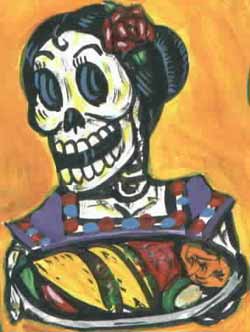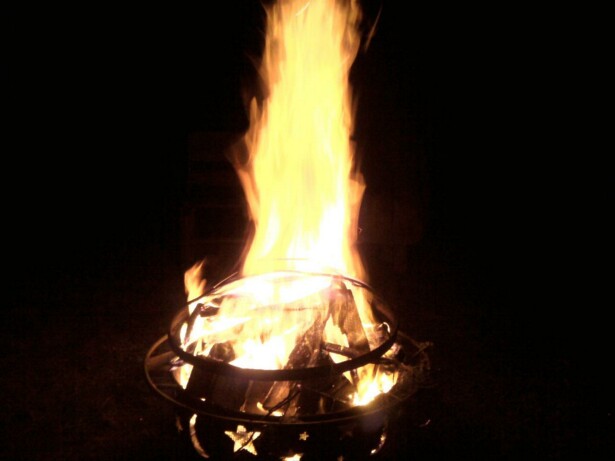|

|
| (c) Patrick Murillo |
The Day of the Dead
El Dia de los Muertos is a perfect blend of a Pagan-Christian holiday. The native culture of Mexico and Latin America held a deep reverence for their ancestors and departed loved ones.
Their transformation of All Hallow's Eve, All Saint's Day, and All Soul's Day into a festive occasion where death is celebrated as a natural part of life, is both a community spectacle
and a time of reunion with family.
If you visit Mexico around Halloween, you may find that the most happening
spot is the cemetery, with people walking between the graves, paying homage to their dead loved ones. It's a Mexican
tradition: El Dia de los Muertos.
Skeletons, tequila, paper flowers and candles all dot graveyards across
Mexico come Oct. 31. Day of the Dead celebrations are held throughout Mexico, but I experienced the tradition in Mixquic, a rustic village on the outskirts of
Mexico City known for its elaborate festivities. The town's rural feel harkens back to its farming roots, which extend all
the way to the Aztecs.
With Spanish colonization came a fusion of ancient beliefs and Christian
customs. The blend, turbulent over the centuries, brought fear of death and the repression of death's imagery until the skull
and skeleton images reemerged in the 18th century, but with a less serious, more jocular tone.
In Mixquic, the townspeople figure death can take a joke, and they are
chummy with it in a way that seems macabre until one catches the mood. Graveyard family plots are brightly decorated and adorned
with treats for the dead on Oct. 31; the spirits of children are thought to return before dawn on All Saints Day (Nov. 1)
and the next day, All Souls Day, adults are honored.
| From the Heard Museum |
|
|
| Celebration of Life Festival |
Rituals, including simulated funeral processions, take place throughout
these days, signaled by the tolling of a bell. People leave their doors open throughout the town, inviting others to visit
their family's shrine.
In one home I was given pan de muerto, or bread of the dead, and I offered
a few coins in a return gesture, taking time to admire the photos and memorabilia at the altar. Home altars traditionally
display religious images, such as crucifixes, as well as food, flowers and sugar sculptures known as alfeniques, to coax the
saints to provide safe return passage to the afterworld after the deads' visit to this one.
As midnight approaches, graves are lit with respectful candles, and the
smoke of incense curls into the air, symbolic of the transformation of the physical to the ethereal. Skeletal mirth remains an inventive folk art theme, from sculptures in museums to humble puppeteers
on the rooftops of the Mixquic houses.
People paying homage also can enjoy the antics of a figure in drag, camping and vamping it up on gravestones, in skull
mask and in the fancy dress of "Catrina," an elegant lady skeleton popularized by artist Jose Guadalupe Posada in his political
cartoons in the early 20th century.
|
